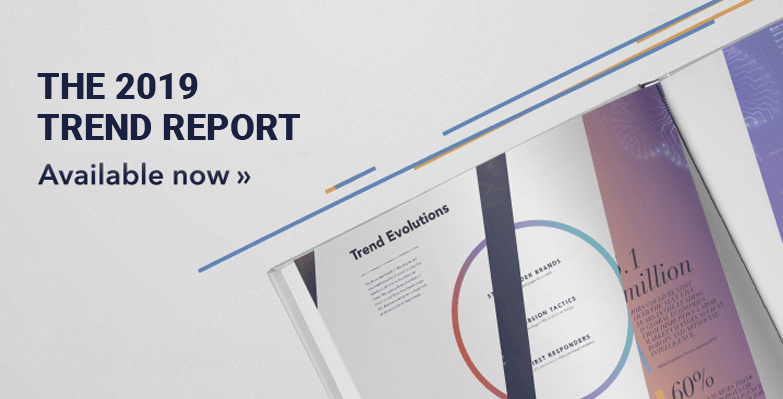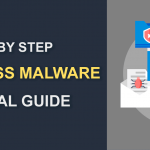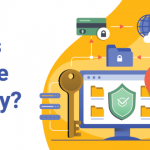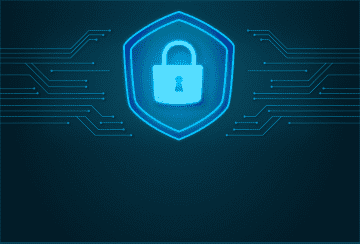2018 saw the return of the ransomware and this why this threat continues to be a leading one that is of much concern for security experts. In 2017, ransomware had a profitable business, but then it reduced over time. Partially, this is because many corporations started to invest in backup solutions that reduced the impact of a ransomware event, or a quality Endpoint Detection and Response (
EDR) solution, which successfully eliminates the risk. Because of this, fewer companies are vulnerable to ransomware and less are paying up. However, 2018 did see a number of sophisticated ransomware attacks.
2018 also witnessed an increase in IoT attacks. Botnets were used to execute mine cryptocurrency, DDoS attacks, infiltrate networks for the purposes of data theft, or even create chaos by "bricking" the device, demanding a ransom to restore it to complete functionality or taking it permanently offline. Attacks like these that target IoT devices increased in 2018 because it has always been difficult to detect whether a device has been affected until something terribly goes wrong. Phishing attacks in 2018 were a huge threat as hackers employed refined, innovative methods to intercept.
With hacking attacks never ceasing to spread all over the world, it is indeed high time for website users and those having their own business websites to always equip themselves with all the essential web security tools that will help protect their sites from several different types of attacks, online fraud, data leak, and above all financial loss.
Such negative situations can be experienced even by the commoners who, for instance, carry out most of their money-related transactions through various online banking options. This is another common area in which hackers try to steal sensitive data like credit/debit numbers etc.
Banks have thus become a key target for hackers and are at the forefront of enterprise cybersecurity. Banks constantly focus on coming up with innovative ways to prevent financial losses and any damage caused to their reputation.
Cybersecurity and Banking: Trends to Watch
Three most significant trends that are expected to play a key role in banking security include:
- Third-party vendors will continue to be a target
With organizations becoming ever more dependent on third-party vendors for their daily operations, these vendors will have to be constantly monitored for cybersecurity vulnerabilities.
Lack of awareness regarding third-party security may cost banks millions.
- Banks will always be conscious and alert of
cryptocurrency hacks
In 2018, cryptocurrencies like ethereum and bitcoin transform from a marginal interest to a mainstream investment. Some analysts have recommended that moving your money to a
crypto wallet is indeed a good strategy to avoid losing it in a bank hacking attack. However, individuals who have been keeping a close watch on cryptocurrency exchanges have experienced some major hacks of their own. Presently, few banks have already started to enter the crypto trend, and a few financial firms have stated that they could start trading cryptocurrencies by mid. Under such scenarios, extreme measures will have to be taken to
guarantee the security of these digital currencies.
- Increased dependence on mobile apps and web portals will increase security risks
These days we find ourselves slowly moving away from cash-based transactions as we use our debit and credit cards for almost all things dealing with money. As an outcome, banks are now beginning to invest in web-based and mobile services that facilitate transfers and payment. All this may sound pleasing to our ears and despite various benefits like time saving etc., we need to understand that these new
cybersecurity trends are actually developing new vulnerabilities that banks will have to address in the years to come.
With these new banking trends, bank customers could experience software-related issues when trying to use the mobile services set up by their banks. The
web-based banking applications may also lack the security that will help protect customer data. We would indeed be lucky if these security risks do not actually become a reality, however, it is still uncertain whether all this will pose a major problem for
banks.
These new banking services will surely prevent people from visiting their banks and carrying out cash transactions. However, banks will have to update their web and mobile cybersecurity practices as they desire to keep up with consumer behaviour while preventing a major attack.
Banks thus have the responsibility to protect their customers funds from cybercriminals, and this will become even more challenging with the growing number of sophisticated cyber threats and hacking attacks. To equip themselves with the best security measures, banks will have to install the best web security software that can fight different issues that can arise from the above-discussed cybersecurity trends. One such
web security tool is
cWatch developed by
Comodo.
How cWatch can Save the Day for You?
cWatch is one complete
website protection software that provides early detection, instant remediation and proactive preventive measures. This tool can be effectively used in banks as it offers six layers of protection that can prevent a "hacked website" issue, which results in hackers stealing all your personal banking details, passwords etc. cWatch is capable of enhancing the security of any banking site with its regular scanning features and efficient web application firewall services.
Comodo cWatch Web thus provides excellent web security with its six layers of protection that can handle any type of cybersecurity trend:
-
Web Application Firewall (WAF)
Powerful, real-time edge protection for all websites providing advanced security, filtering, and intrusion protection
-
Malware Monitoring and Remediation
Detects malware, provides suitable methods and tools to remove it, and prevents future malware attacks
-
Cyber Security Operations Center (CSOC)
A team of always-on certified cybersecurity professionals providing round-the-clock surveillance and remediation services
-
Security Information and Event Management (SIEM)
Advanced intelligence that can control existing events and data from 85M+ endpoints and 100M+ domains
-
PCI Scanning
Allows service providers and merchants to stay in compliance with PCI DSS
-
Secure Content Delivery Network (CDN)
A global system of distributed servers that help enhance the performance of websites and web applications
 Related Resource
Cheapest CDN Service
Best CDN
Pay as You Go CDN
CDN
Free CDN
Website Malware Scanner
Website Vulnerability Scanner
Website Backup
How to spot a fake fraudulent or scam website
Best Website Security
WordPress Security
Website Status
Related Resource
Cheapest CDN Service
Best CDN
Pay as You Go CDN
CDN
Free CDN
Website Malware Scanner
Website Vulnerability Scanner
Website Backup
How to spot a fake fraudulent or scam website
Best Website Security
WordPress Security
Website Status 
 Related Resource
Cheapest CDN Service
Best CDN
Pay as You Go CDN
CDN
Free CDN
Website Malware Scanner
Website Vulnerability Scanner
Website Backup
How to spot a fake fraudulent or scam website
Best Website Security
WordPress Security
Website Status
Related Resource
Cheapest CDN Service
Best CDN
Pay as You Go CDN
CDN
Free CDN
Website Malware Scanner
Website Vulnerability Scanner
Website Backup
How to spot a fake fraudulent or scam website
Best Website Security
WordPress Security
Website Status 
 (23 votes, average: 3.96 out of 5, rated)
(23 votes, average: 3.96 out of 5, rated)








